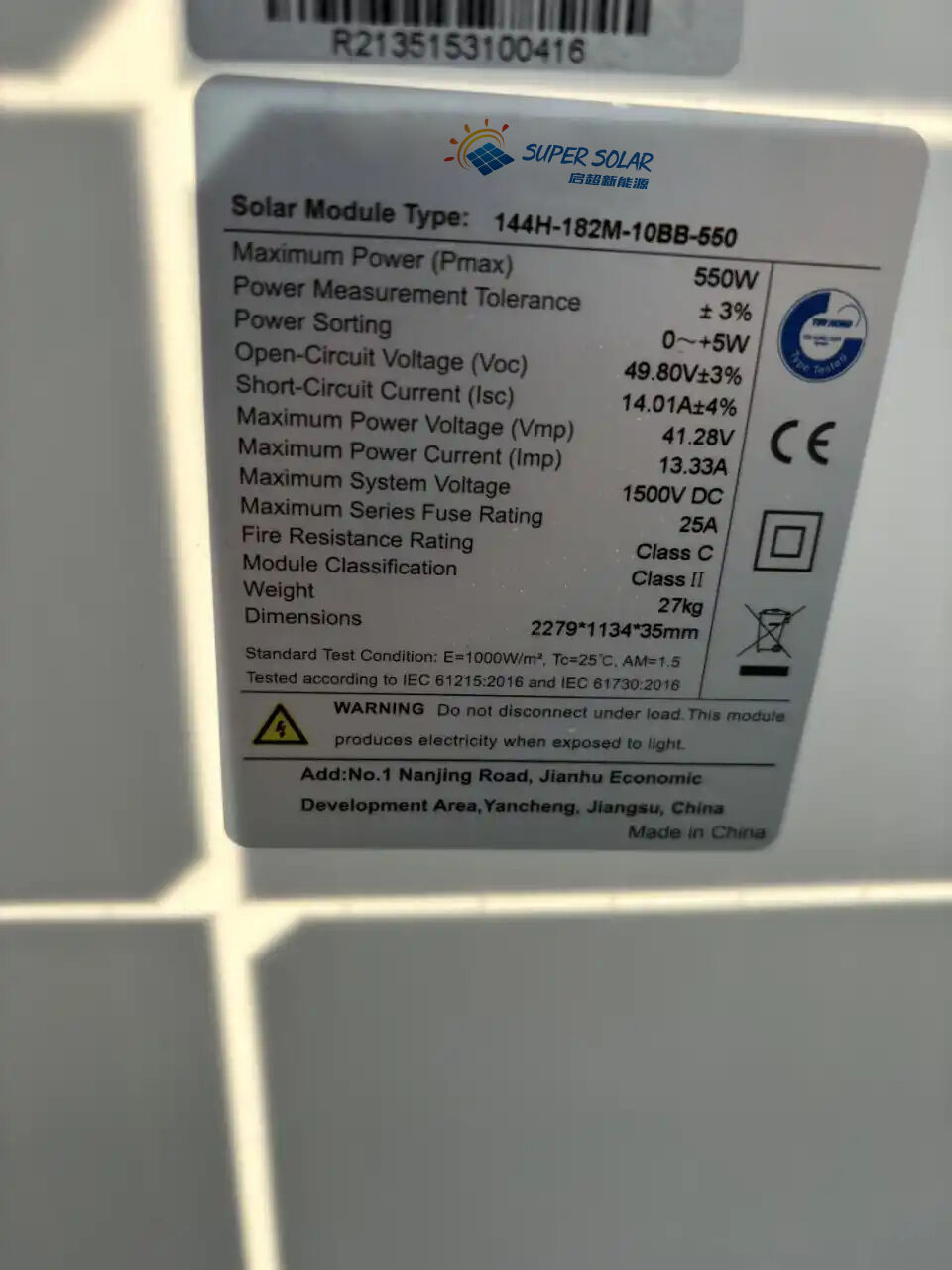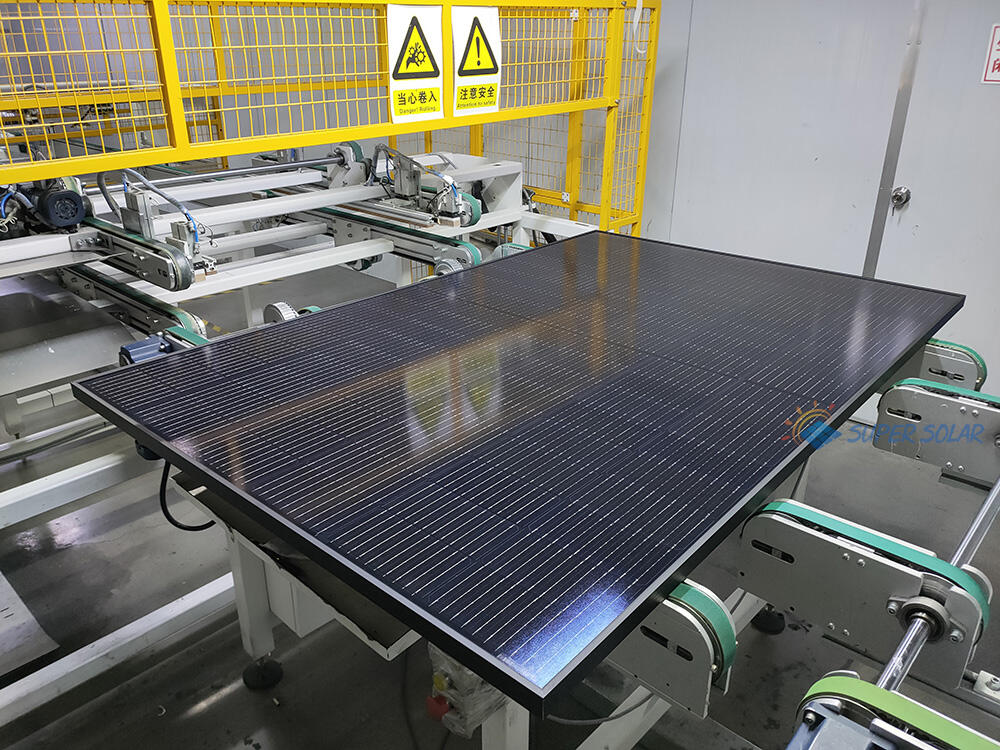Understand the key factors that determine solar panel performance and reliability.
At Super Solar, we believe informed decisions lead to better energy solutions. That’s why we help our partners and customers understand the key specifications behind every solar panel. Below, we break down the most important parameters that influence module performance, efficiency, and application suitability.
1. Core Electrical Parameters
Maximum Power (Pmax / Pmpp) Indicates the highest power output under Standard Test Conditions (STC). Example: A 550W panel can deliver up to 550 watts in ideal sunlight.
Power Tolerance Defines the acceptable range of actual power variation (e.g., ±3%). 550W ±3% → actual output ranges from 533.5W to 566.5W.
Open-Circuit Voltage (VOC) The highest voltage when the module is not connected to a load. Important for string configuration and inverter voltage limits.
Short-Circuit Current (ISC) The maximum current under short-circuit conditions. Used for sizing cables, fuses, and protection devices.
Voltage & Current at Maximum Power Point (VMPP / IMPP) Operating values where the panel produces its peak output. Essential for inverter matching and system design.
2. Efficiency Parameters
Module Efficiency Percentage of sunlight converted into electricity. 22% efficiency = 220W output per m² under 1000W/m² sunlight.
Temperature Coefficient Measures how performance changes with temperature.
Power Coefficient (e.g. -0.35%/°C): Output decreases as temperature rises.
Voltage Coefficient: Affects design in cold-weather regions.
3. Physical Characteristics
Dimensions & Weight Typical size: 2279×1134mm (for 72-cell modules) Weight: Around 20–25 kg/m² — consider for rooftop loads.
Cell Type
Monocrystalline: High efficiency, sleek black appearance
Polycrystalline: Lower cost, blue color (now less common)
Thin-Film: Flexible, great for special applications but lower efficiency
Front & Back Materials
Glass: 3.2mm tempered glass with >91.5% transmittance
Backsheet: Durable TPT/TPE layers for moisture and UV protection
4. Reliability & Durability
Degradation Rate
First-year: ≤2% (premium ≤1%)
Annual: ≤0.45% (retains ≥85% output after 25 years)
Fire Rating
Class A: Highest safety, suitable for rooftops
Class C: For ground-mounted systems
Wind & Snow Load Resistance
Wind: ≥2400 Pa (up to 12-grade storms)
Snow: ≥5400 Pa (~55 cm of snow)
5. Environmental Adaptability
Operating Temperature Range: -40°C to +85°C
PID Resistance: Ensures long-term stability under high-voltage conditions
Salt Mist & Ammonia Resistance: Certified for coastal and agricultural environments (IEC 61701 & IEC 62716)
6. Certifications & Standards
IEC 61215: International performance standard
IEC 61730: Safety and insulation requirements
UL 1703: Certification for North American markets
PID-Free: Verified resistance to Potential Induced Degradation

Example: 550W Monocrystalline PV Module
Max Power: 550W
Voc / Isc: 49.8V / 14.01A
Vmpp / Impp: 41.28V / 13.33A
Efficiency: 22.1%
Tolerance: +3% / -0%
Dimensions: 2279×1134×35mm
Weight: 27kg
Temp Coefficients:
Pmax: -0.35%/°C
Voc: -0.27%/°C
Choosing the Right PV Module
High Efficiency – For rooftops or space-limited areas
Low Degradation – Better long-term investment returns
Inverter Compatibility – Vmpp must match MPPT range
Environmental Fit – Choose modules with suitable temperature and corrosion resistance for your region
Need help selecting the right solar module for your project?
[Contact Super Solar]– Our technical team is ready to assist you with customized solutions.


